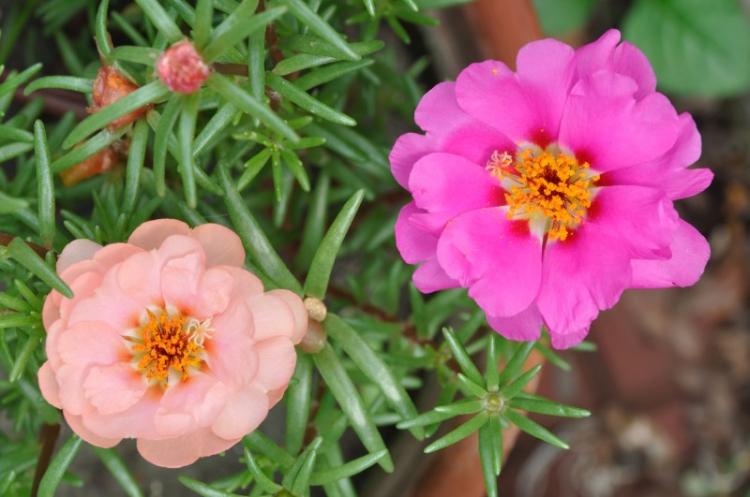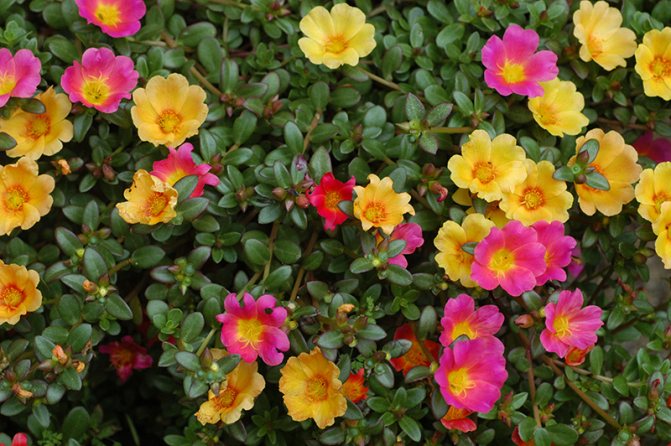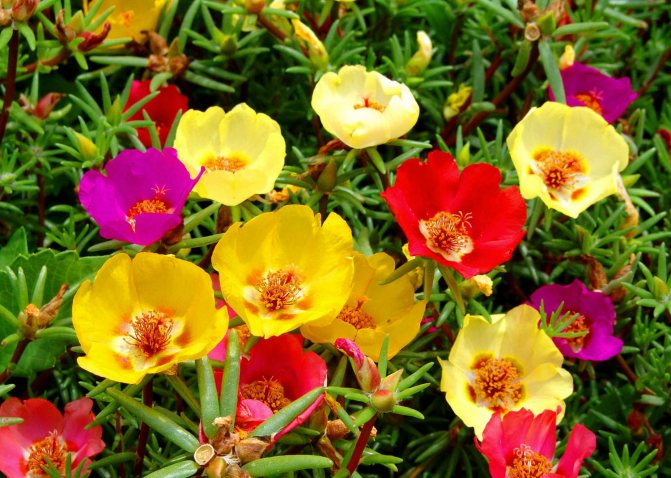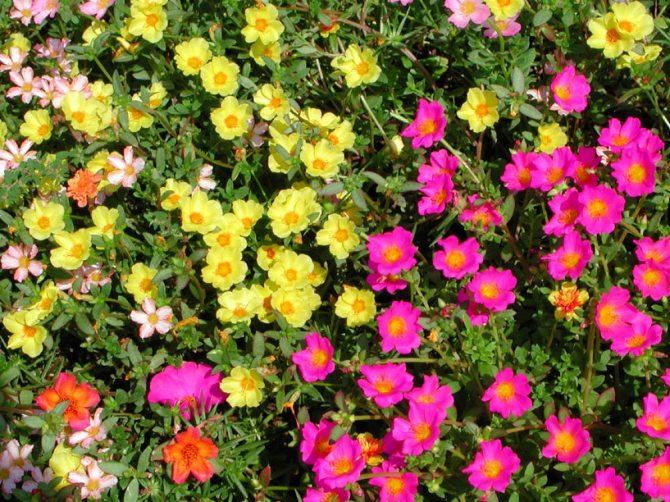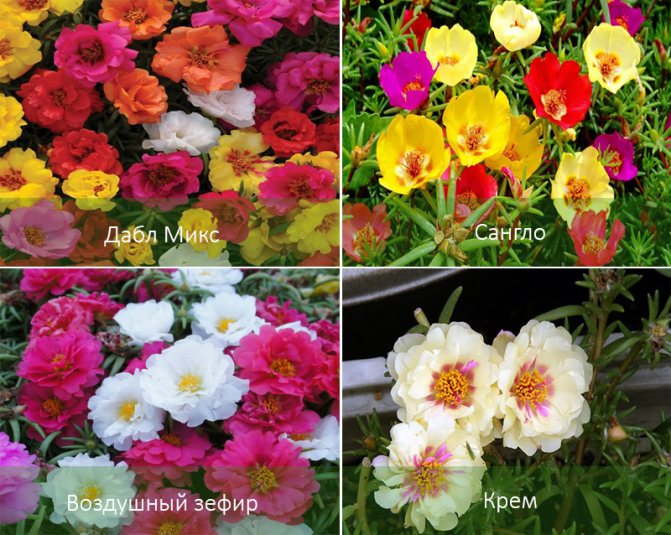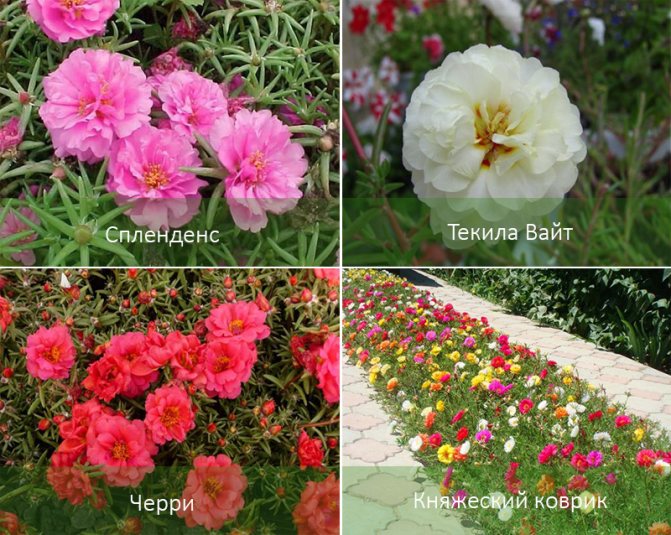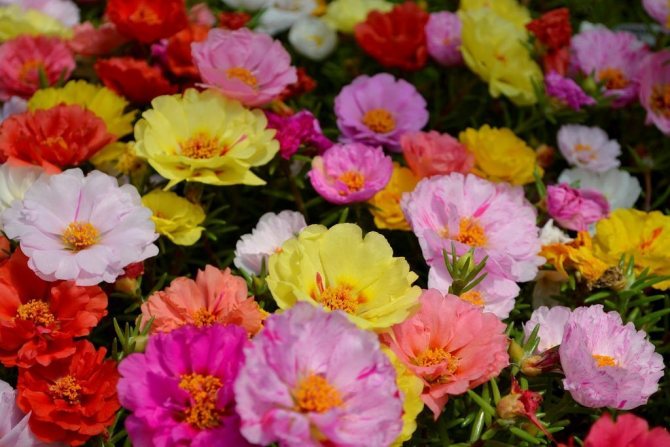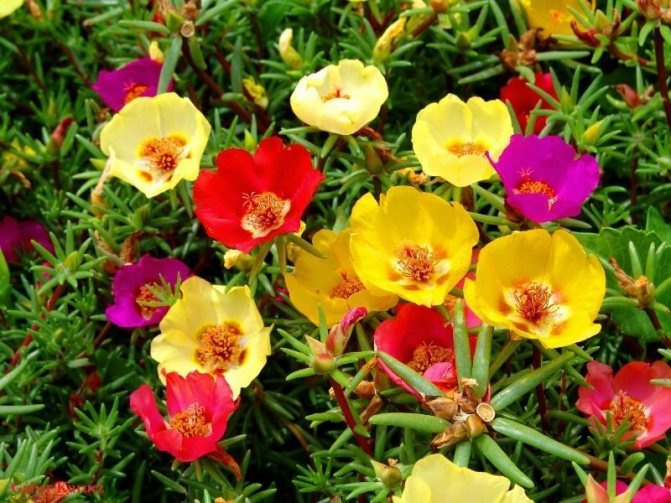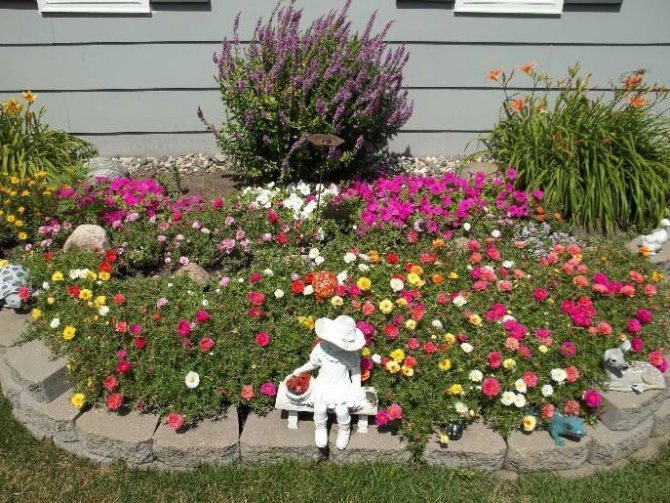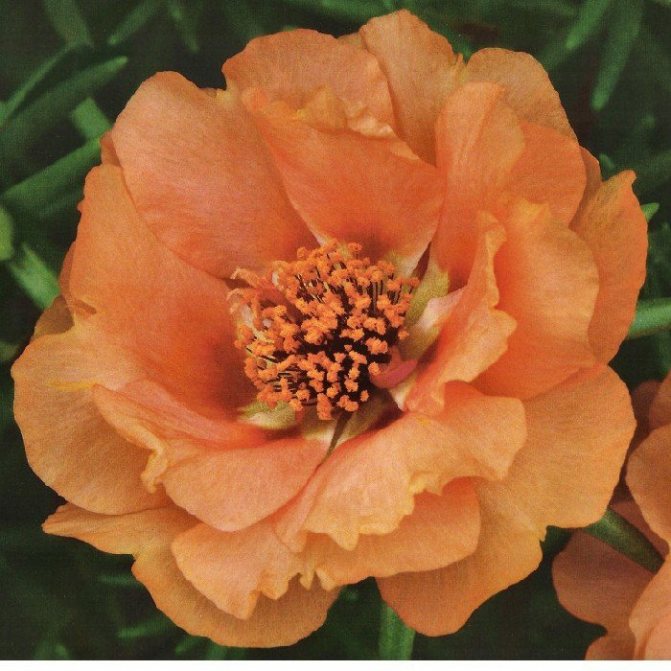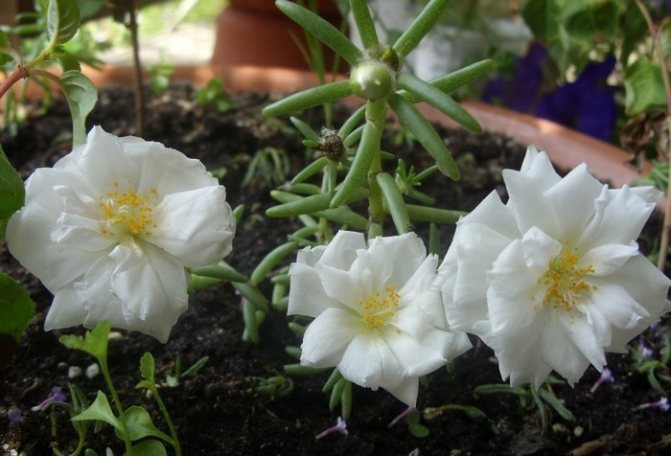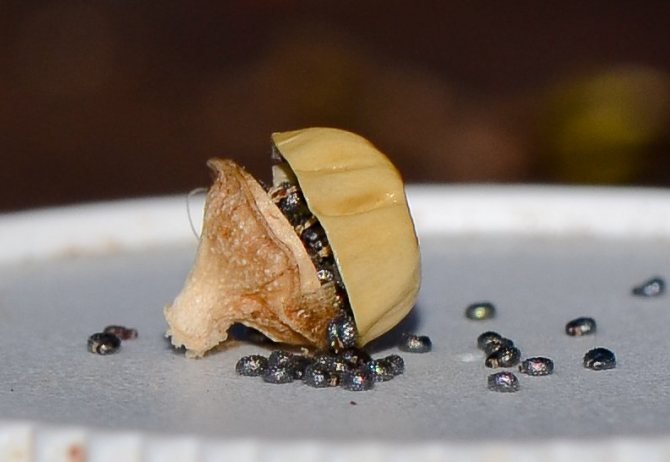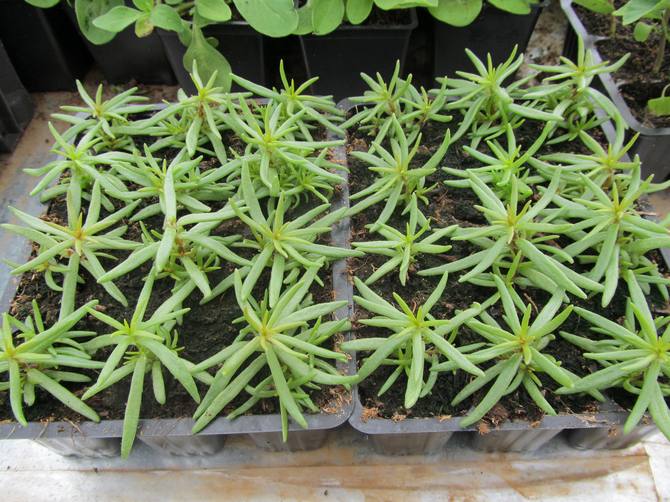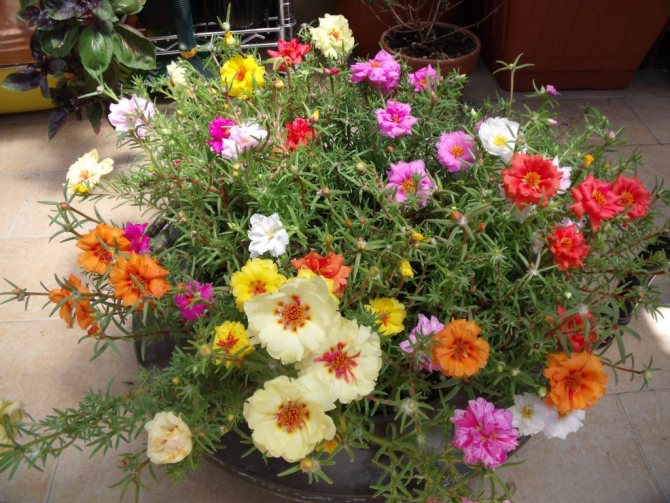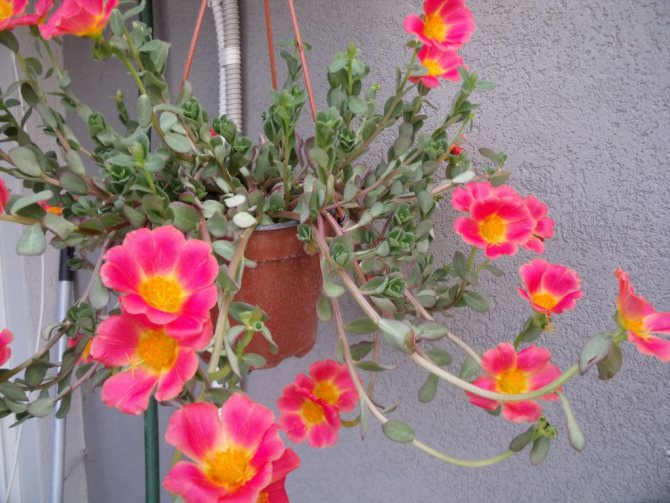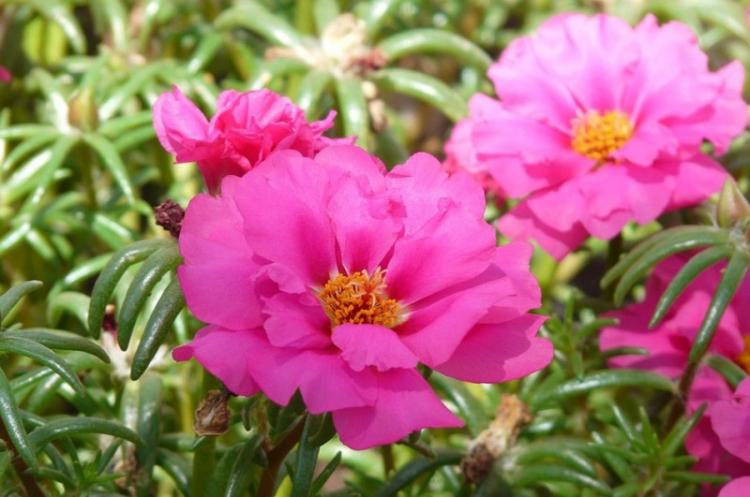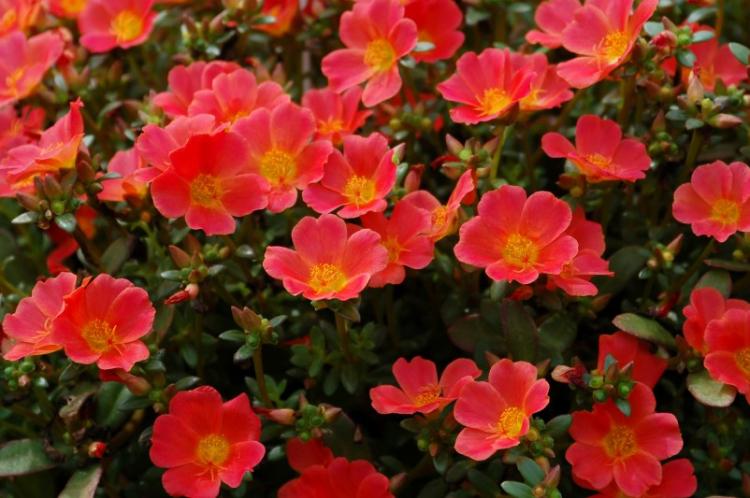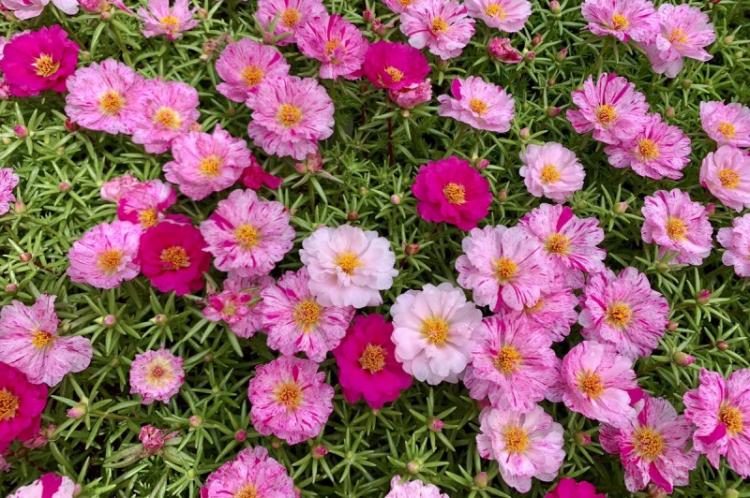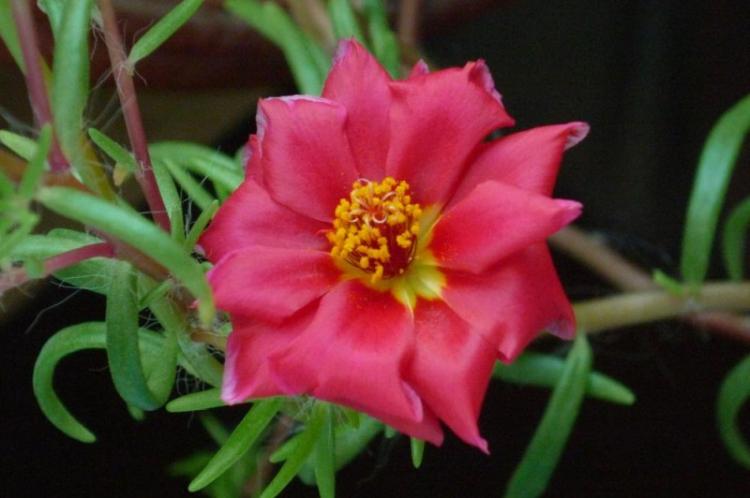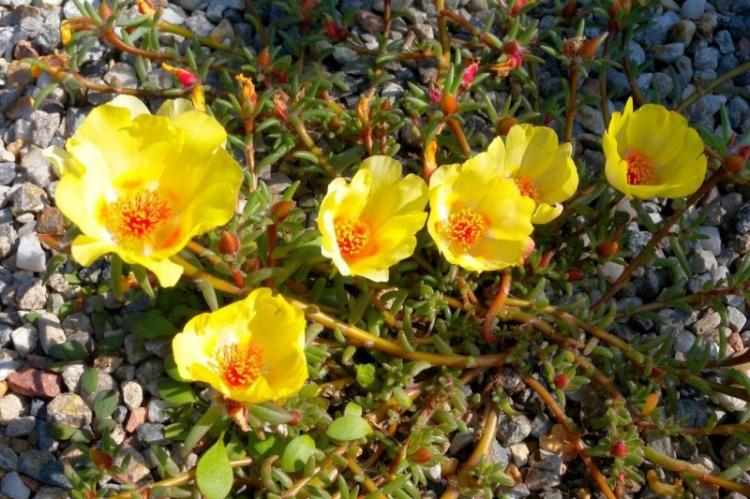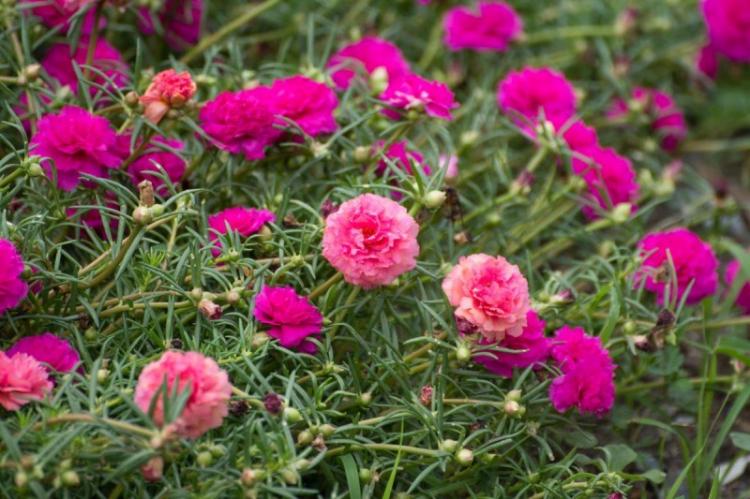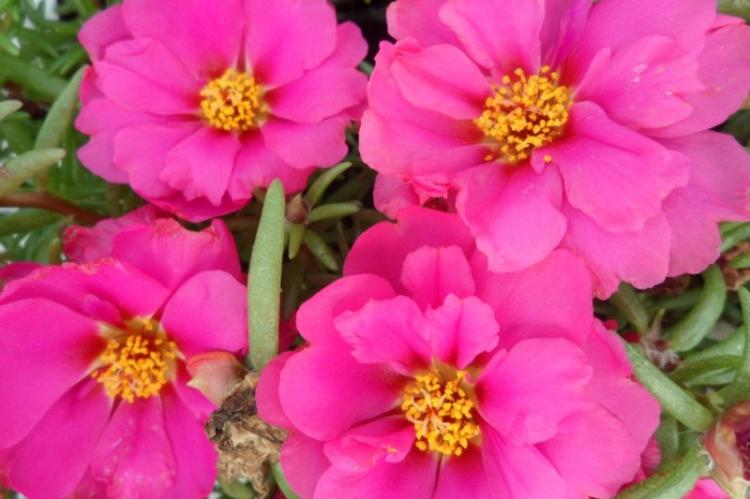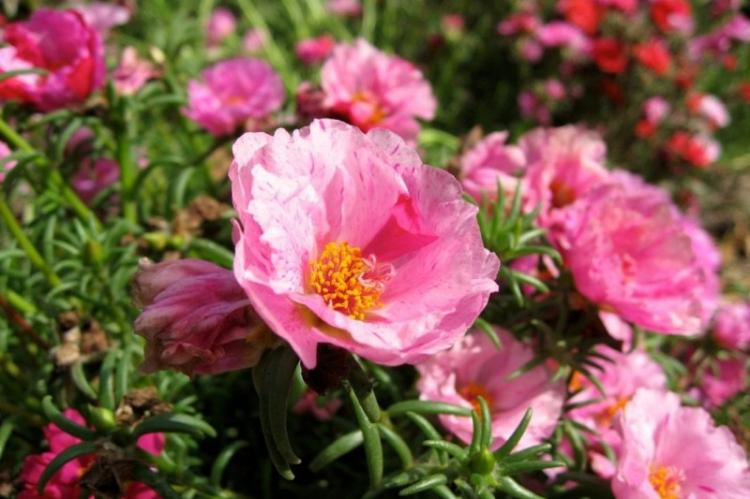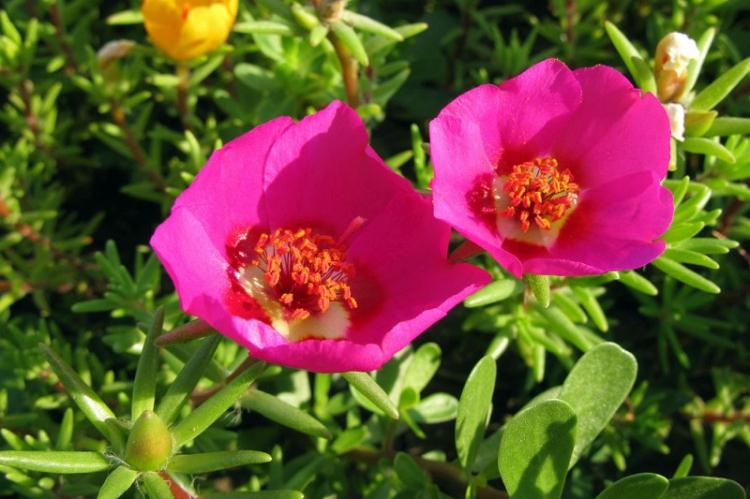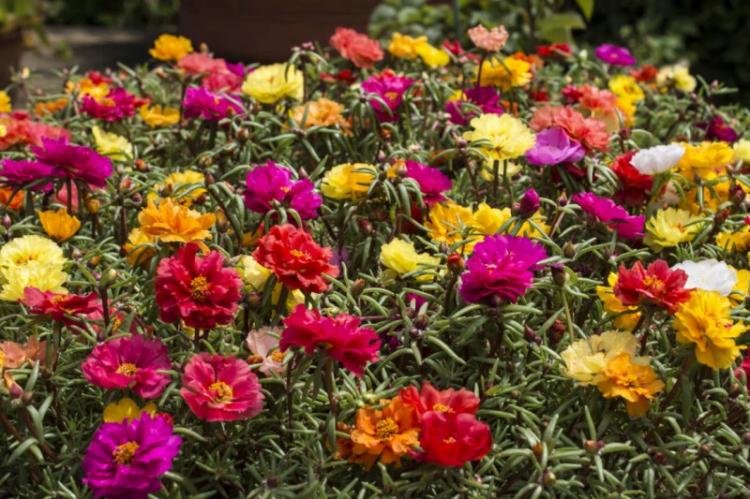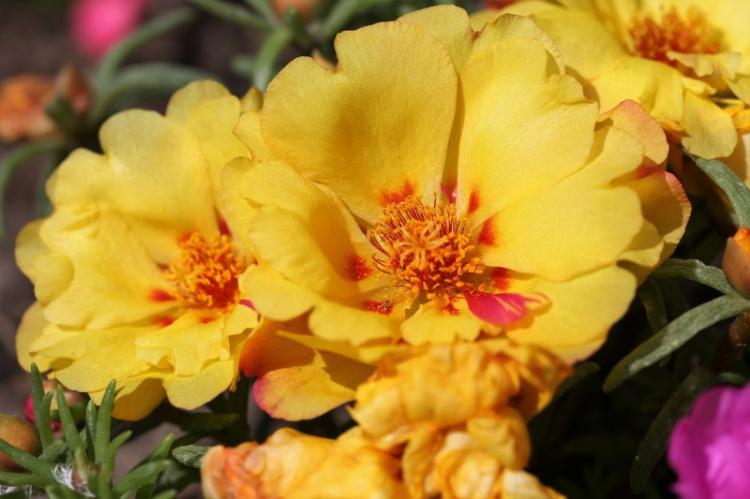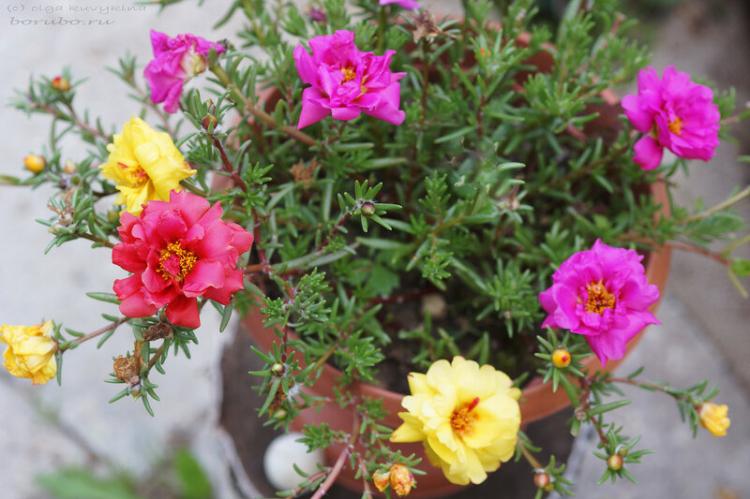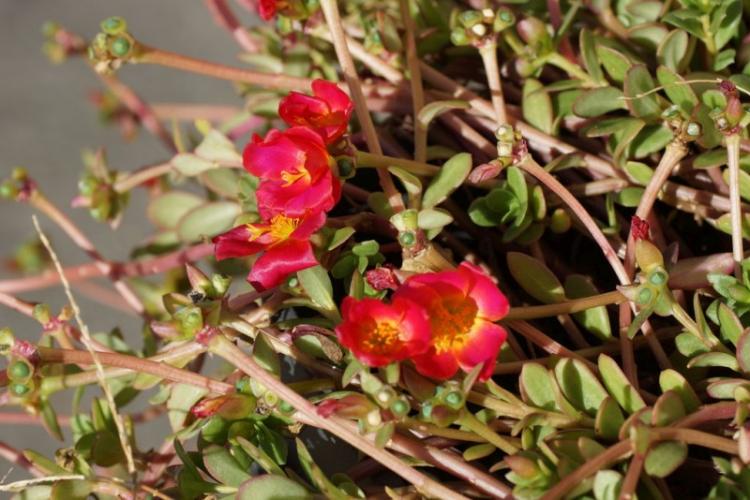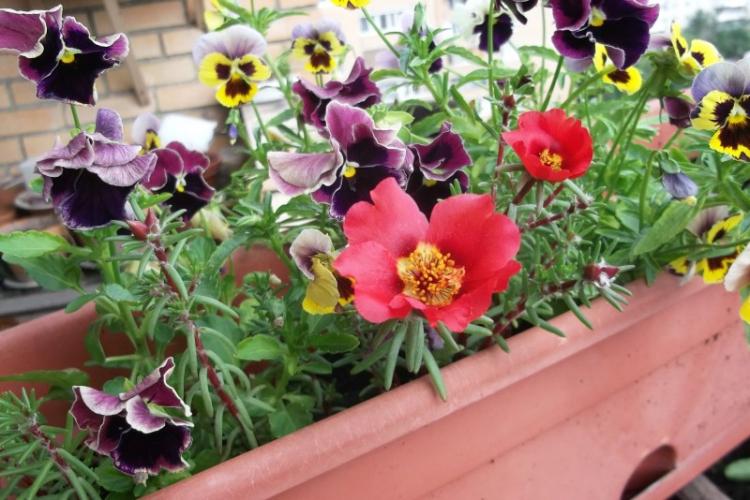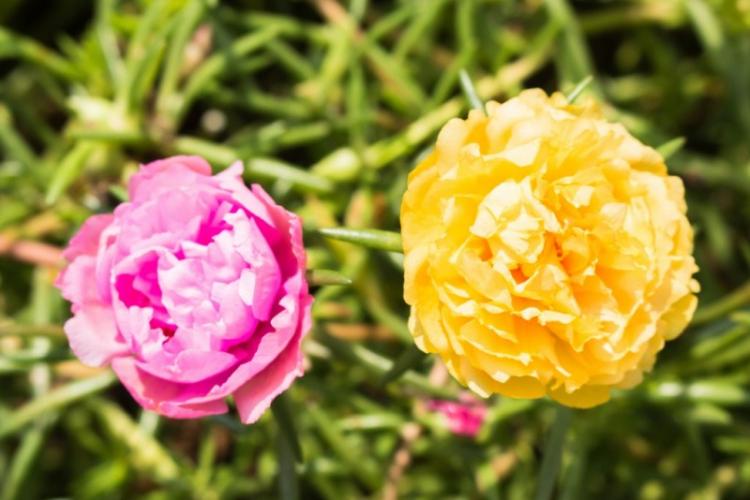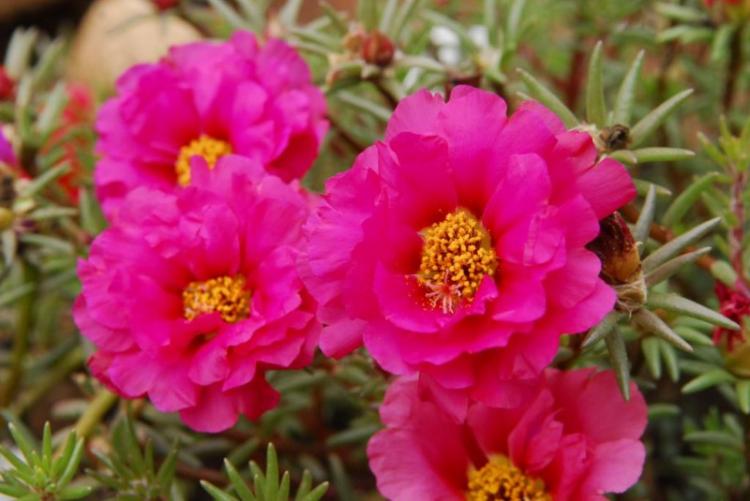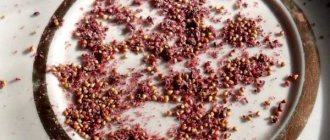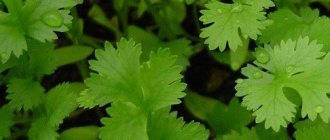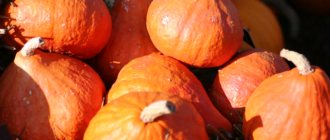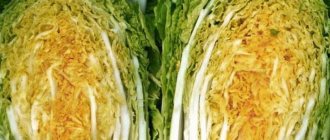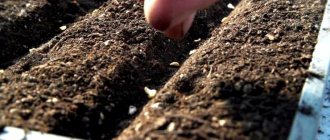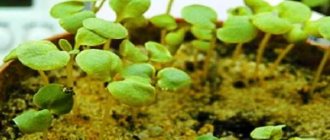Decorative purslane is a bright ground cover plant and is ideal for summer residents and gardeners who love unpretentious, undemanding, drought-resistant flowers. Also, the plant is suitable for growing in poor soils. The best way to get a plant on your site is to grow from seed at home. Early flowering can be seen thanks to seedlings.
general characteristics
Ground cover purslane is rather an ornamental weed, the beauty of which was appreciated by flower growers and could be used for its intended purpose. It is sown on alpine slides in landscape design, in rockeries, in containers, pots and border compositions. The Latin name portula symbolizes the open gates, which resemble the seed pods of a flower. He came to us from the American continent, and spread throughout Europe in the Middle Ages. It was even believed that he heals all diseases: for example, severe wounds or snake bites.

When and how to collect seeds?
Purslane in the wild reproduces by self-seeding. This is not suitable for cultivars of the plant, since the seeds die during the winter.
In order not to lose planting material, starting in August, the gardener should prepare for action: the timely collection of seeds. The seed boxes develop unevenly, which requires daily inspection of the plant. Readiness for cutting indicates the color of the box: yellowing.
After the seed sac is cut, additional drying will be required in a dry and well ventilated place. The shelf life of the material is 3 years. Only untouched plants are suitable for the subsequent germination of purslane seedlings.
If purslane vegetable was used as a seasoning ingredient in a meat / fish dish, the seeds will not develop well. It is recommended in such cases to delimit plants for food and to obtain planting material.
Purslane in medicine and cooking
A separate category is edible garden varieties of purslane, from which soups, salads and preparations are made. It is used in some medicinal formulations and diets, and the enterprising French even developed special species with yellow and red leaves for this. The healing properties of purslane were known in antiquity, and over time, scientists only confirmed its anti-inflammatory and diuretic properties. The leaves and stems of purslane are rich in organic acids, easily digestible proteins, carotene, saponins, mineral salts and vitamins A, E, C, K. The juice of the plant helps to reduce cholesterol and blood sugar.
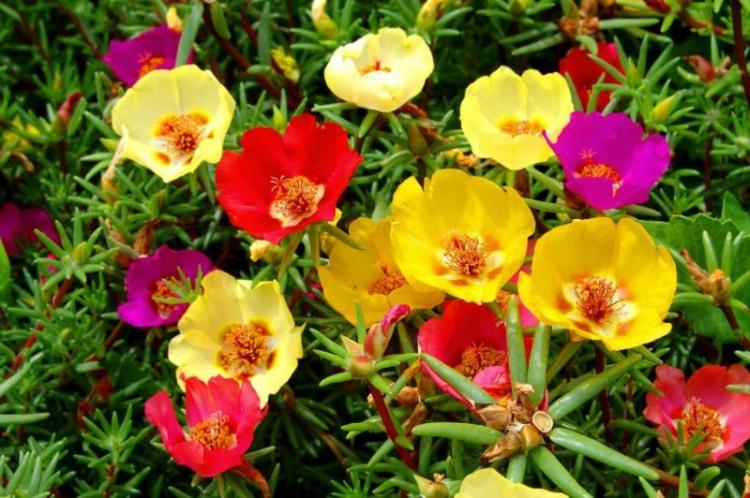

Features of collecting purslane seeds
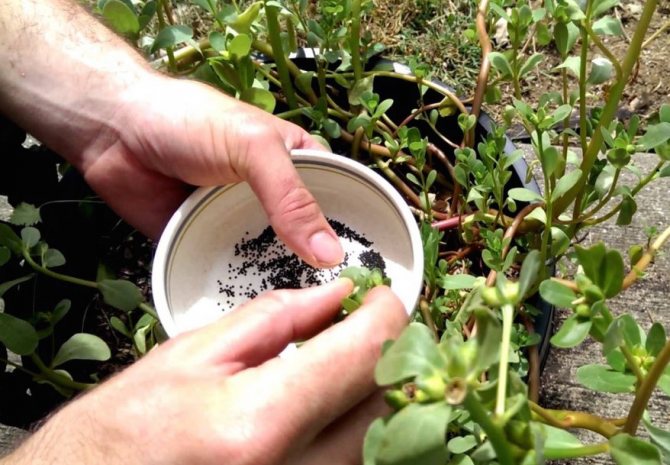

The flowering of terry purslane is very abundant. The splendor and splendor of the petals and leaves, does not allow you to notice one feature - the short life of each bud. They do not live more than one day, quickly fading away. After that, the fruits are tied and small boxes are formed, which contain seeds. It is from these boxes that the contents should be obtained, preventing it from entering the ground, that is, preventing self-seeding.
If you refuse to collect purslane seeds, they will fall into the ground. In the next summer season, new plants will appear, which will bloom only at the end of summer.
Features of collecting purslane seeds are as follows:
- Throughout the entire period of growth, periodically you will need to feed the plant with a mullein. This is done three times, every 14 days.
- After feeding, the seed (first) bolls form and open in the plant. The flower stems will begin to turn slightly yellow.
- When observing the above processes, you should dig up the purslane by the root, and then shake off the ground. You should not trim the leaves.
- The excavated elements are placed in a well-ventilated area. It is advisable to hang it on well-stretched ropes. A cloth should be placed under the hanging plants (burlap is better).
- As it dries, the suspended purslane will open the capsules from which the seeds will fall.
- Collect the seeds and store them until spring comes.
The storage period for purslane seeds should not exceed five years. After this period, the germination percentage will almost completely decrease.
Types of purslane
All types of purslane can be divided into two broad categories: decorative garden and edible garden. The first are large-flowered, with many varieties that differ in color and terry. The latter are notable for their leaves, which are used in cooking and medicine.
Flamenco
The Flamenco variety combines all those features for which flower growers love decorative purslane so much. The main feature is large and spectacular double flowers, which can be of completely different shades. The bush itself is medium in size, but its shoots are strong and fleshy, covered with bright green needle leaves.


Cherry
A small graceful decorative Cherry purslane grows in gardens only up to 15 cm in height. At the same time, it has elastic and fleshy creeping shoots that quickly cover the soil. The variety got its name due to the pronounced cherry shade of large double flowers up to 5 cm in diameter.
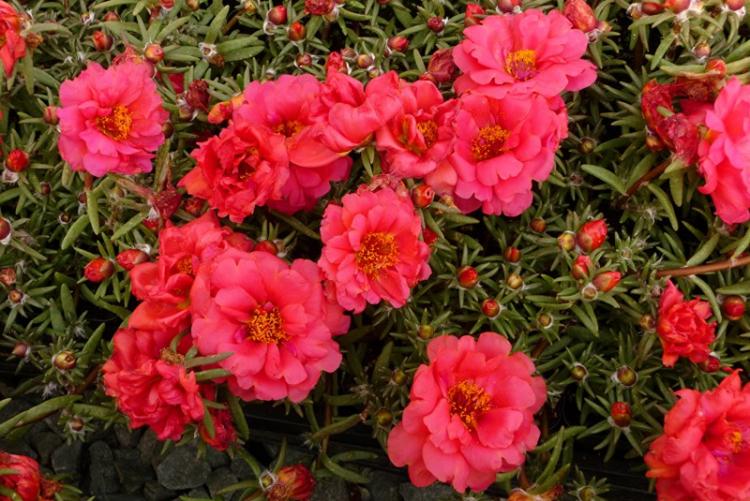

Cream
A hybrid delicate garden purslane with large flowers, which sometimes open even more than 5 cm. The delicate creamy shade becomes darker and richer from the edges to the center.


Pun
Another compact garden variety with long, resilient stems, like Cherry. But the pun is distinguished by shades of large juicy flowers that stand out favorably against the background of the green carpet. This variety is especially loved by landscape designers for its brightness and versatility.
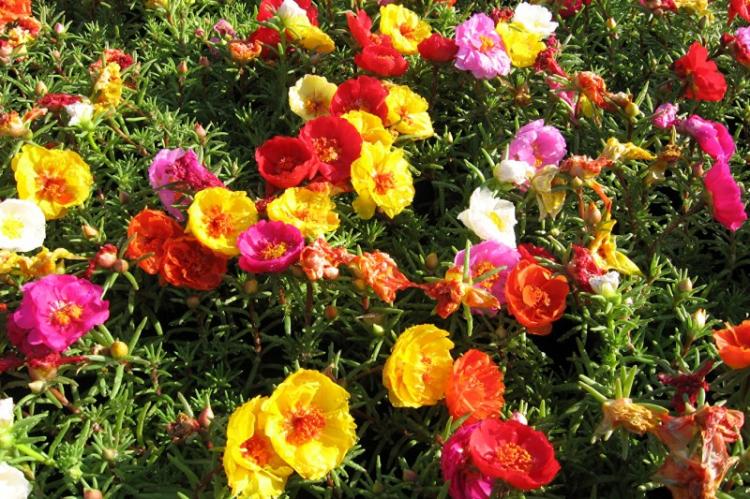

Scarlet purslane
The name of the variety directly indicates the shade of medium-sized double flowers. This purslane has two expressive features: its stem is highly branched, and the plant blooms until mid-autumn.


Sanglo
The graceful decorative Sanglo purslane is painted in a delicate shade of pink. Fragile and delicate flowers, larger than average, look especially interesting against the background of long needle-like leaves. Another feature: during cloudy weather and rains, Sanglo buds do not close.
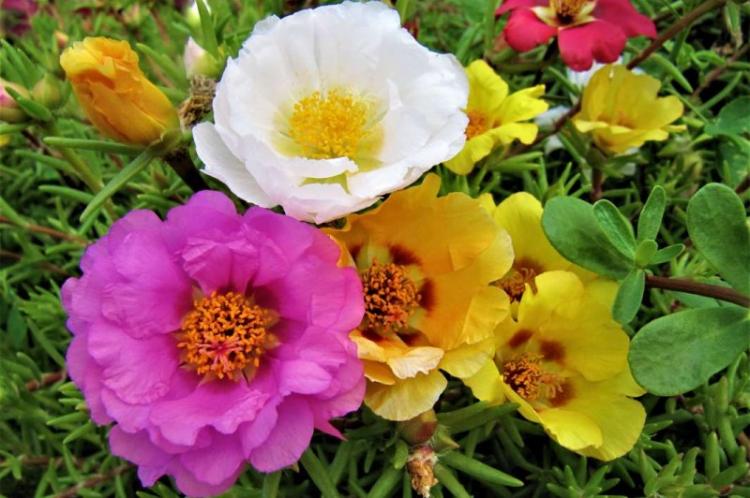

Sonya
Another variety of garden purslane, a feature of which is a variety of shades. Sonya flowers can be white, yellow, scarlet or purple, and the texture of the petals is satin, with tints. Towards the middle, dark spots appear on them, which frame the spread out brush.
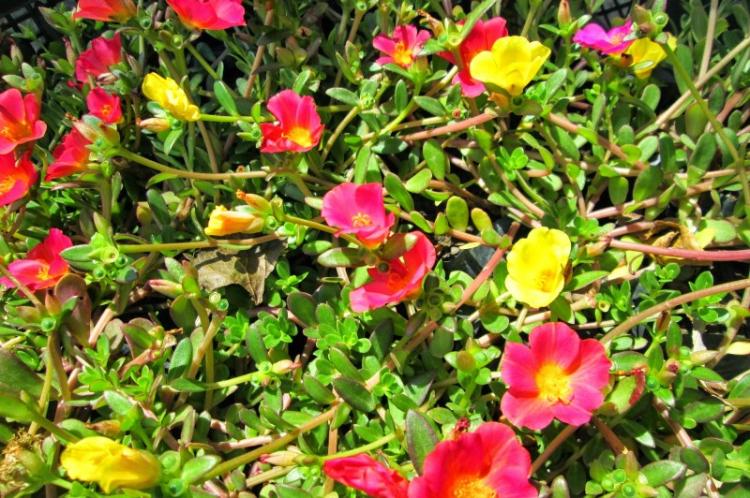

Makovei
This is a garden purslane, which grows in bushes up to 35 cm tall. Within a month after germination, its stems and branches can be used for food. The appearance of the leaves of Macovey is also slightly different: they are ovoid, saturated glossy green.
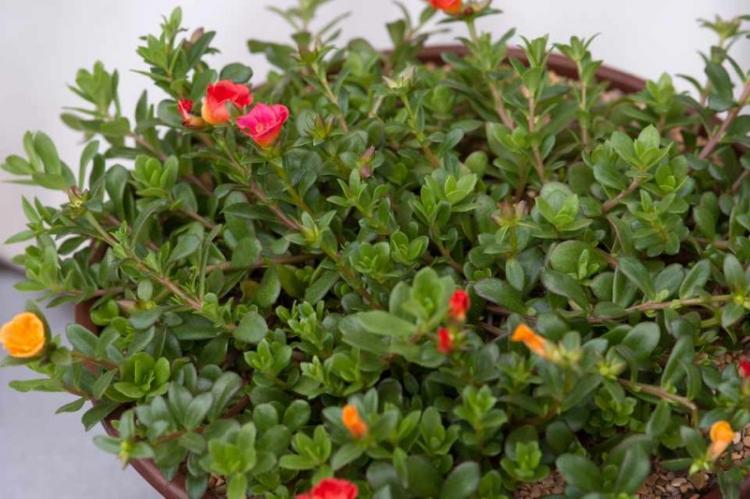

Glowworm
The firefly is one of the tallest garden purslane, which grows up to 45 cm and higher. Its thick, fleshy stems are densely covered with medium-sized leaves. The Firefly is ready for use in cooking earlier than many relatives: 3-3.5 weeks after germination.
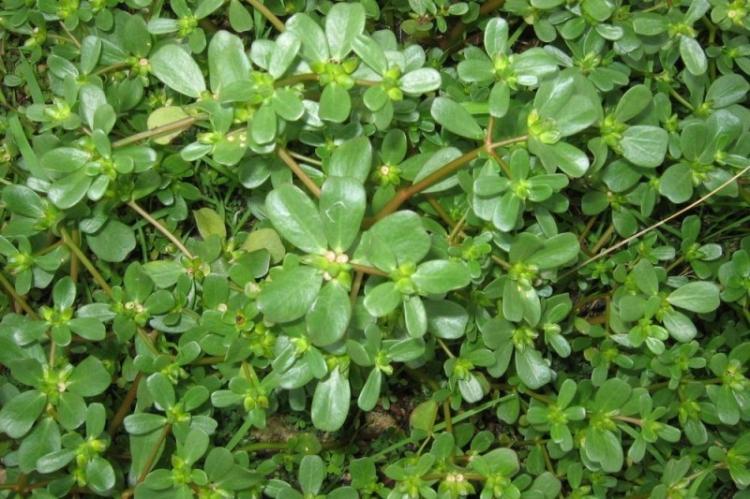

Paradox
A small garden purslane is lower than most other edible varieties: the bushes grow somewhere up to 20 cm. This is due to the fact that its stems are even more creeping, covered with small but thick oval leaves. The shade of the foliage of Paradox is slightly yellowish, and you can use the plant for food in a month.
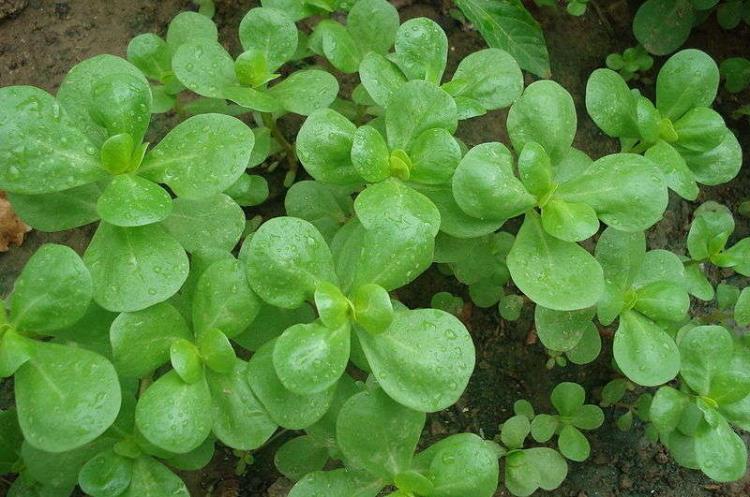

Ampel purslane
Purslane is an annual plant, but there are several perennial ampelous varieties. They are not adapted for life in the open field in our latitudes, because they still cannot stand the winter. But in home pots, containers and pots, such a flower feels quite confident: the main thing is to control the humidity and take it out into the sun in warm weather.
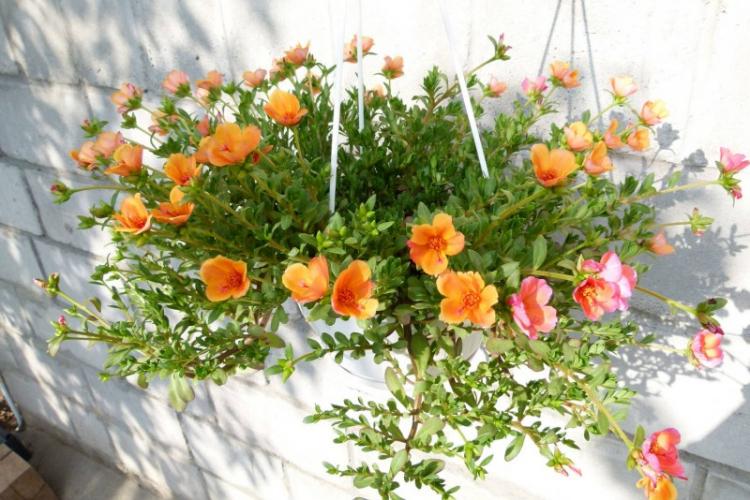

Step-by-step instructions for sowing purslane seedlings
The correct sowing of seeds is a complex undertaking in which every step is important. Below you will find a description of the main stages of planting purslane for seedlings at home, as well as photos and diagrams.


Selection and preparation of seeds
To grow strong and strong seedlings of large-flowered or terry purslane, it is necessary to choose quality seeds. It is recommended to buy them from reputable stores and from a trusted and reliable manufacturer.
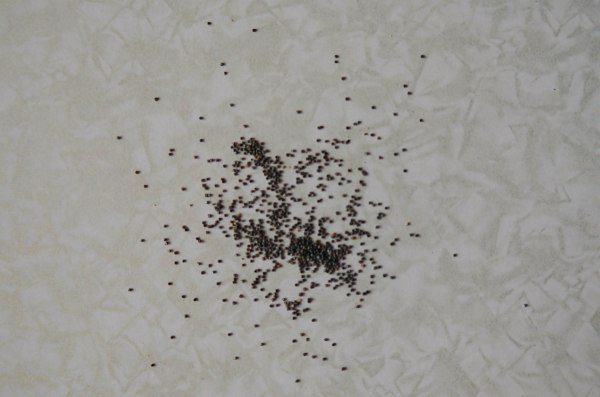

The hallmark of good seed is the package must contain detailed information about the variety, recommendations from the manufacturer on the timing of sowing, planting in the ground, contact information, production period and shelf life. In the photo of a pack of purslane seeds, you can see that all the data is available:
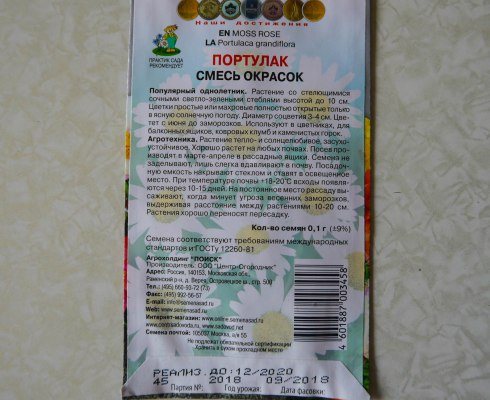

Advice! You should not buy suspiciously cheap seeds or a product in crumpled or damaged packaging (storage conditions may have been violated, which will affect germination).
You can not only buy seed, but also collect it yourself... If you want to collect seeds yourself, then it is better to do this with flowers that grow in pots:
- Before harvesting, it is necessary to transfer the plant to the home at the end of summer.
- When the seed pods turn brown after flowering, the seeds can be harvested.
- In order to properly collect the seeds, you need to collect the boxes, dry them, and then open them.
- Remove seeds in a paper bag in a dry and dark place.
But even from plants that grow in the open field, you can collect seeds. However, it is often necessary to check the plants after flowering, as the pods open slightly as they mature.
Note! Purslane seeds can remain viable for up to three years. However, this is possible only if the optimal storage conditions are observed - darkness, dryness, room temperature (without overheating and hypothermia).
Concerning preparation of purslane seeds before sowing for seedlings, Then, as a treatment, you can soak flower seeds in a solution of a growth stimulant drug, for example, "Epin-Extra", "Zircon". Prepare the solution and soak the seeds according to the instructions on the preparation.
Since the seeds are very small (as seen in the photo below), they need to be handled very carefully:


After soaking, filter them through a thick cotton cloth and let the cloth dry so that the seeds can be easily shaken off.
By the way! Seeds can be planted without pre-sowing preparation, but if you still want to protect yourself and strive for fast, friendly seedlings and strong seedlings, you can process them.
Soil preparation
Should choose loose, light, neutral soil, which has excellent air and water permeability.
Important! You can not plant a crop in fertile soil containing black soil, compost, humus.
It is optimal to sow purslane seeds into the soil that you prepared with your own hands at home:
- garden land (2 parts);
- sand (0.5 parts).
But you can also use a universal soil mixture for seedlings, although its composition also needs to be slightly edited:
- universal soil (2 parts);
- sand (0.5 parts);
- perlite (0.5 parts).
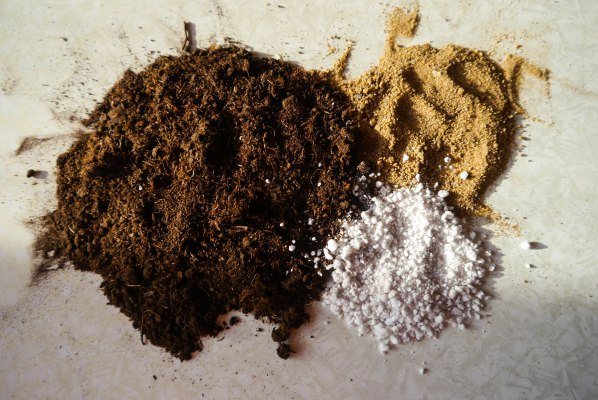

Advice! Experienced flower growers who have more than once dealt with purslane seedlings recommend adding charcoal to the soil mixture (1 part to 5 parts of soil).
The seedlings of this flower culture are susceptible to a dangerous disease - black leg, therefore, to prevent the disease, it is worth disinfect the soil before sowing... It is most effective to ignite in the oven (30 minutes, the temperature in the oven is 90 degrees) or steam (1.5 hours over steam, stir regularly), and then pour with Fitosporin-M solution to populate the soil with useful microflora. You can also freeze or pickle with a fungicide.
Choice of capacity
The most optimal option for seedlings of purslane is wide and shallow boxes, bowls... But you can also sow in individual containers: plastic cassettes, cups, peat pots, peat tablets.
The container must necessarily have drainage holes! They are necessary to remove excess moisture and prevent soil acidification, as well as for irrigation, which is recommended through the pallet.
Direct sowing for seedlings
The scheme for sowing a flower for seedlings at home is simple: if you do everything carefully, then even a novice florist will successfully cope with the procedure. The main steps with photos of planting purslane seeds for seedlings:
1) Place a drainage layer on the bottom of the container, about 1.5 centimeters thick. You can use perlite, pebbles, broken brick, expanded clay as drainage (it is used in the photo).


2) Fill the container with soil, but not to the brim (in case the seedlings begin to stretch, then you will need to fill up the soil).


3) Moisten the soil with a syringe or spray bottle. The water should be soft, clean, warm.
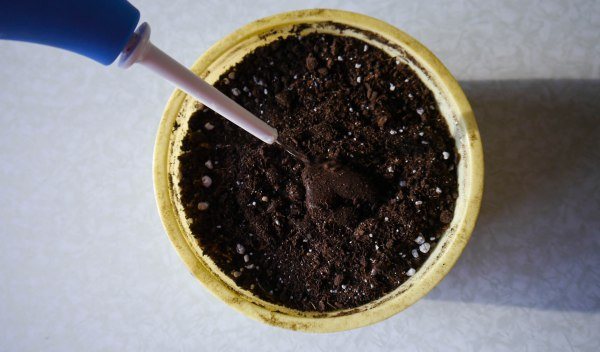

4) Lightly brush the ground with your hand or spoon.
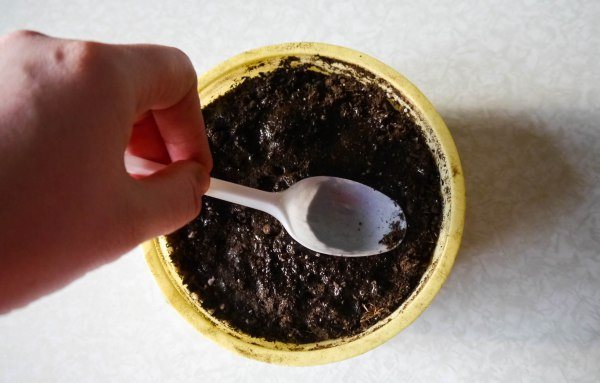

5) Now you need to sow. Since the seed is very small, planting seeds should be done superficially... Do not plant too thickly, as you will have to thin out later.
It is very convenient to sow purslane seeds with sand... The method is ideal for small seeds. To do this, mix a small amount of clean, river sand with seeds and sow evenly over the surface of the soil.


- You can also simply purslane seeds sow by hand: distribute them evenly over the surface, as if adding.
- Another very convenient option for sowing seeds for seedlings is into the snow. To do this, spread clean snow over the surface of the soil and scatter the purslane seeds by hand or using a white paper sheet. When the snow melts, the seeds will be sucked in to the desired depth.
6) Moisten the soil surface with a spray bottle (you can use a growth stimulant solution).
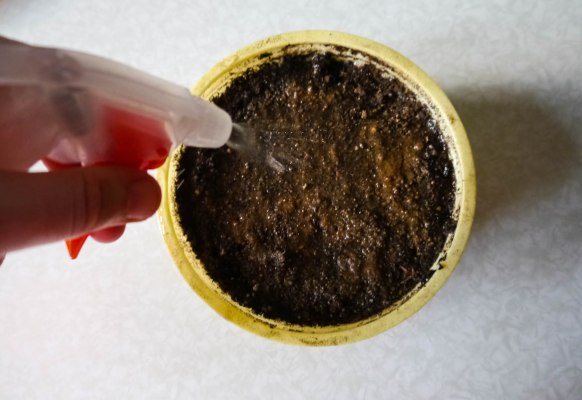

7) Now you need to create a mini-greenhouse, which is necessary to create optimal conditions for germination of seedlings. To make a mini greenhouse, simply cover the container with glass, lid, or plastic.
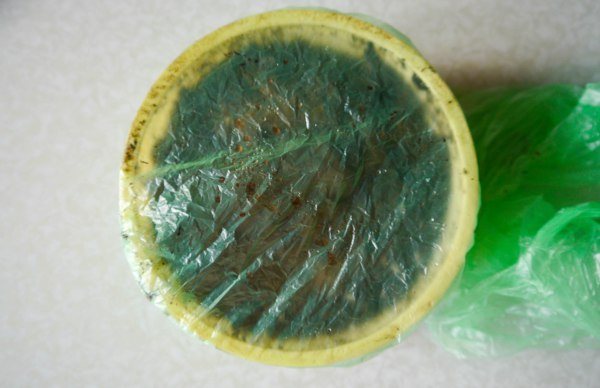

It is recommended to label the container and sign the name of the crop, the date of planting, so as not to be confused with seedlings of other plants.




Purslane care
Many growers grow purslane as an unpretentious ground cover plant. It gracefully covers the ground with thorny foliage with variegated multi-colored flowers. And for leaving, it is enough to follow a few simple rules that even inexperienced gardeners can cope with.
Temperature
Like other southern succulents, purslane easily copes with the heat and even tolerates temperatures up to +45 degrees. Therefore, in temperate latitudes, it is an ideal choice for summer seedlings in a sunny backyard. The minimum temperature is +10 degrees, and the flower does not tolerate severe frosts at all and dies already at 0.
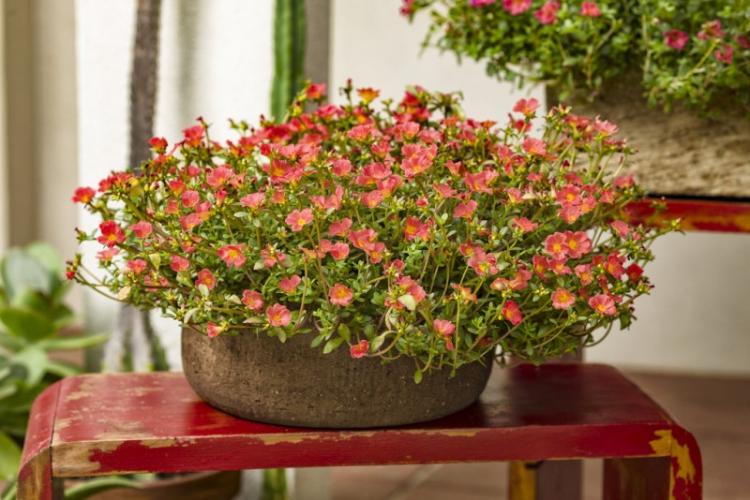

Lighting
Purslane feels best in open, sunny areas or in slightly shaded areas. But even if there is a shadow, it should be light and insignificant, otherwise the flower will not bloom in all its glory. Lighting is one of the most important and fundamental requirements of an otherwise unpretentious purslane.
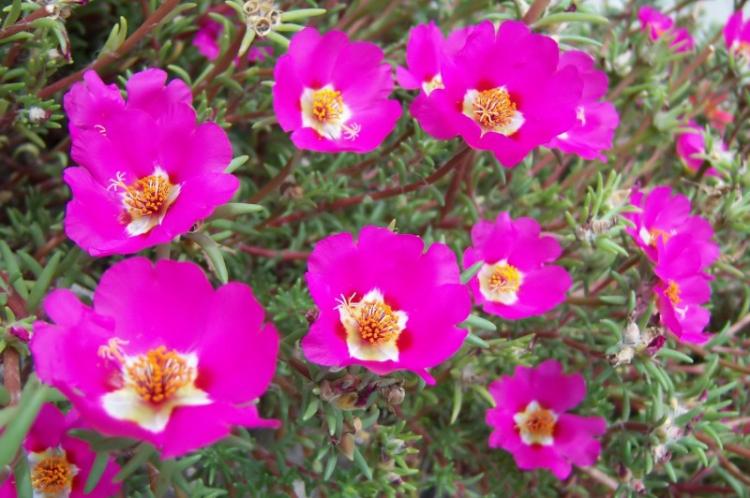

Watering
Purslane doesn't need too much water, like many other garden flowers. With excessive watering and constant stagnation, fungal diseases appear - especially if the air temperature drops. Water the flowers more often only during the heat, and then when the soil is completely dry.


Fertilizers and feeding
Purslane is by nature an annual succulent, so it doesn't need too difficult conditions. He feels comfortable even on poor sandy soil, and tolerates saturated nutritious peat worse. If you fertilize the soil too intensively, the greens really grow actively, but to the detriment of flowering.
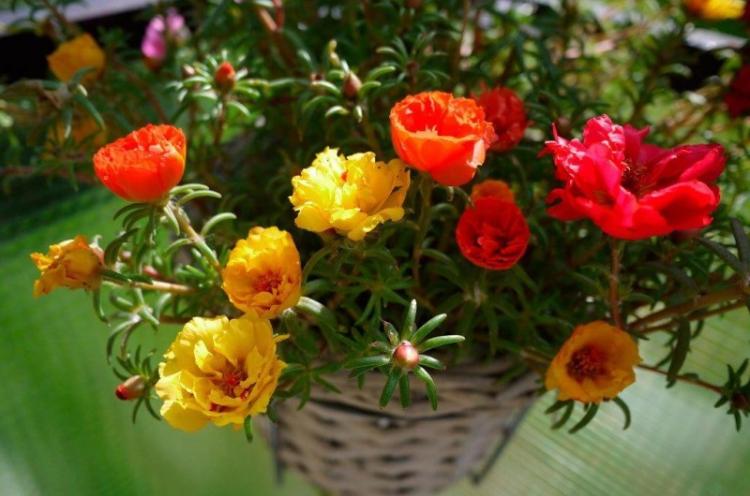

Pruning
Purslane must be trimmed and weeded, otherwise it grows too quickly. If left to chance, it becomes a rather aggressive weed. Therefore, it is also important to remove faded flowers, otherwise seed pods will form in their place, and small seeds rapidly spread throughout the site.
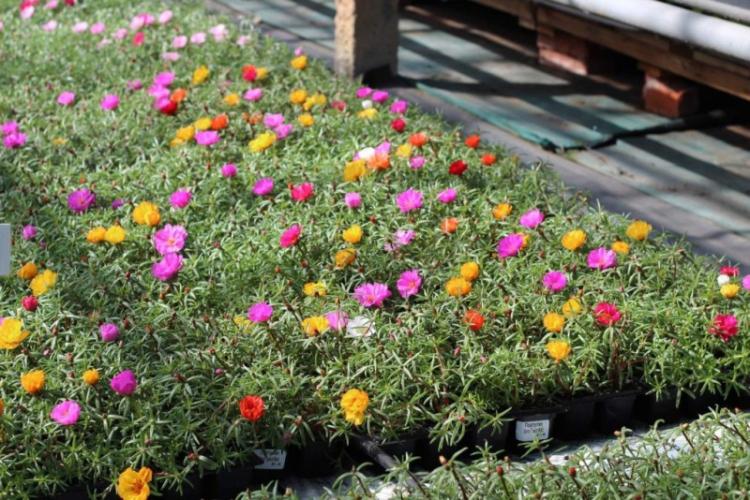

Problems with growing purslane
Some gardeners complain that purslane blooms modestly or refuses to open the buds at all. Most often, the reason for this whim is mistakes when choosing a place and soil. Purslane will not bloom in a shaded area. The soil for this plant must be poor. Purslane will consider the soil too greasy, which was fertilized even a year ago. He will be happy to build up a carpet of greenery, but will not bloom. Fertile land owners can artificially reduce the nutritional value of the soil by adding sand, vermiculite, expanded clay or fine gravel.
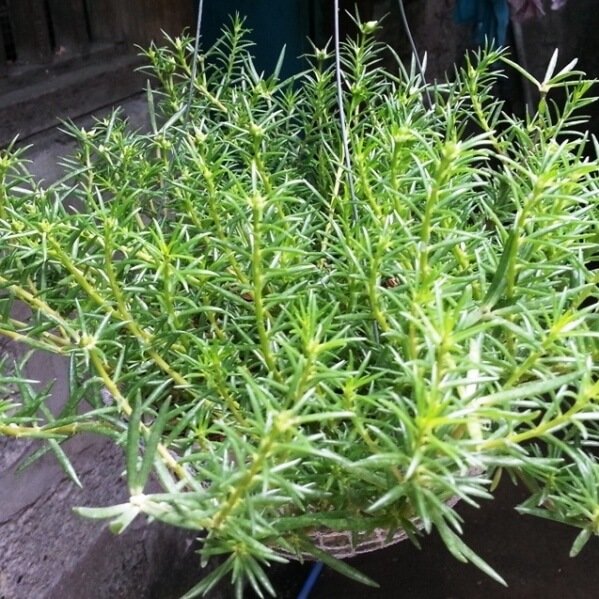

In nutrient-rich soil, purslane will grow lush greenery without flowers
Purslane almost never blooms in cloudy and rainy summers. Damp weather can make the plant sick. Leaves and stems become stained, rot and die. Purslane stops growing. Treatment consists of sanitary pruning. It is necessary to remove the affected parts, and then treat the purslane and soil with a fungicide (Previkur, Soligor, Fundazol or Skor).
How to get rid of pests from purslane
Parasites do not favor purslane. Only aphids and thrips can taste it. Aphids prefer young shoots, it is impossible not to see it. To rid the purslane of the pest, spray it with an insecticide - Aktellik, Aktara, Decis, Karate. Thrips leave shiny streaks and spots on all parts of the plant, including flowers. Purslane loses strength, slows down growth. Use Intavir, Agravertin, Karbofos or Fitoverm against this parasite.
Planting and breeding purslane
Purslane can be grown directly from seeds planted in the ground, but then it will not bloom immediately. Any light permeable soil that must be pre-moistened is suitable for germination. Mix fine seeds with calcined sand and spread evenly over the surface. After that, cover the sowing with foil, air it once a day and make sure that the temperature is above 20 degrees. After a week and a half, the first shoots make their way, which means that you can remove the film. You do not need to water the sprouts directly, just spray them with a spray bottle. Dive and plant the sprouts when an average of two leaves appear on them: the recommended distance is 4 cm.
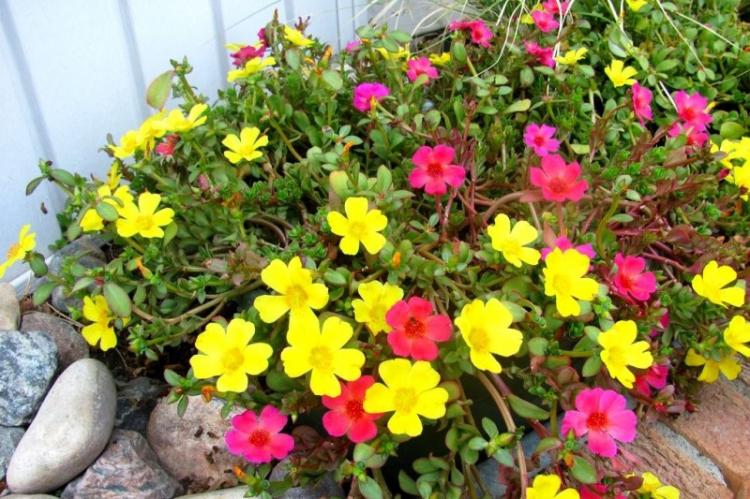

If you want the purslane to bloom as quickly as possible, propagate it by cuttings. The sprouts should be transplanted into open ground at the beginning of summer, when the threat of unexpected frosts has already passed. Start hardening the seedlings in a couple of weeks, gradually taking them outside for several hours.Cuttings are planted when they already have about a dozen leaves with buds. Plant them up to 20 cm apart and regularly weed and loosen the soil until the seedlings cover it with a flowering carpet.


When to plant purslane seeds for seedlings, in what month
The optimal time for sowing seeds of large-flowered and terry purslane for seedlings falls on March and April.... However, when choosing when it is best to plant a crop, also focus on the weather and climatic conditions of the region in which it is planned to grow from seeds. For example, in the Volga region and in the Middle lane (including in the Moscow region), you can plant purslane from mid-March, in the South of Russia the optimal time is at the end of February and at the beginning of March, in the Leningrad region, in Siberia, in the Urals it is better to sow in April.
You can also choose the appropriate dates for planting purslane according to the 2020 Lunar calendar:
- Favorable days for the procedure: in February -1, 2, 3, 4, 5, 6, 7, 8, 10, 11, 12, 13, 14, 15, 16, 17, 18, 19, 20, 25, 26, 27, 28, 29 ;
- in March - 2, 3, 4, 5, 6, 7, 8, 10, 11, 12, 13, 14, 29, 30, 31;
- in April - 1, 2, 5, 6, 7, 9, 18, 19, 20, 24, 25.
- in February - 9, 21, 22, 23;
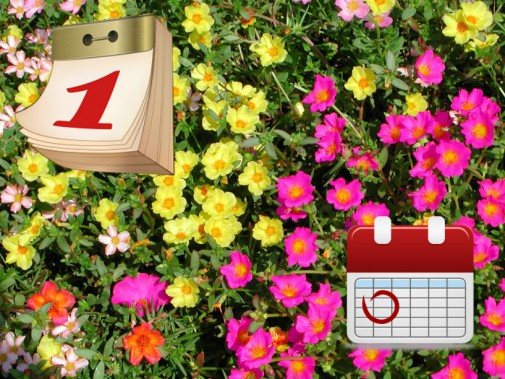

Pest and disease control
Purslane rarely gets sick and is not very attractive to parasites - this is another reason for its popularity among gardeners. To forget about aphids, slugs and snails, it is enough to treat seedlings with insecticides on a schedule. Typical diseases are associated with watering and moisture: these are various fungi and rot. Gray mold spreads if cool rainy weather lasts too long. The same applies to root rot, from which the ground part withers and turns yellow: if the problem is not solved in time, the plant will quickly die. Control is very simple: do not overuse watering, thin out the green carpet in time, remove dead plants and weeds. If you find signs of a disease, immediately remove all damaged areas before it spreads. And during an unforeseen prolonged bad weather, treat the garden with special fungicides for prevention.


The best way to fight is prevention
It is very important to timely detect the appearance of the first shoots of such a weed as garden purslane. How to get them out at this stage? It is enough to timely detect and carefully pull out the plant and remove all broken off branches.
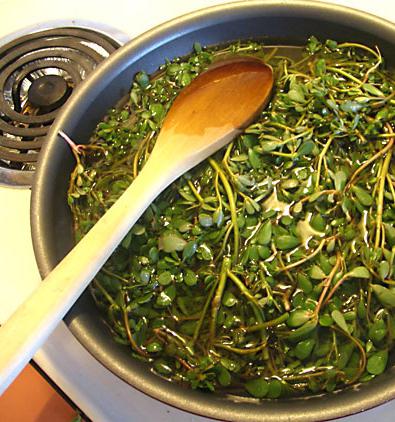

Agrofilm is a universal prophylactic agent. No weeds can grow under it. Over the summer, it helps to effectively destroy the seeds located in the upper layer of the soil, preventing the emergence of purslane shoots the next year.
Purslane - photo
At first glance, purslane may seem too simple and inconspicuous. But to be convinced of the opposite, it is enough to see what a luxurious "carpet" it turns into. For this we offer you a whole selection of photos!
Control methods
If summer residents do not use purslane for medicinal purposes, then it is worth fighting with it immediately, because it has an intensive pace of development and in a short period of time will be able to master the entire territory of the personal plot.
Weed residues are not stored in the garden, but burned, because the seeds preserved in the fruit pods are able to ripen and germinate, and the cut off shoots easily root in the ground.
Mechanical
Weeding
Regular weeding helps to destroy the weed, however, on the advice of experienced gardeners, this should be done thoroughly, uprooting the plant.
When working with a regular hoe, only the aerial part is cut off, and the root system remains intact and after a short time gives new shoots.
The difficulty of dealing with purslane lies in the fragility of its stems, which break at the surface of the earth, leaving the roots intact.
Technology:
- on light and well-drained soils, before weeding, the site is watered with water to soften the soil layer to the depth of the growth of the root system;
- it is necessary to weed the ridges immediately, without waiting for the soil to dry out, while the weed vegetation is in the slurry;
- when manually pulling out bushes, they do not capture the aerial part, which easily breaks off, but pulls out by the main root.
The recommended time for the procedure is before flowering. Regularity - once a week.
Mulching
Mulching the beds noticeably stops the growth of weeds, restricting access to sunlight, and becomes an obstacle to the free penetration of seeds into the ground and rooting of creeping stems, helping to remove the weed.
For mulch, straw, peat, sawdust, grass are used. The minimum thickness of the mulch layer is 3 cm.
An alternative to natural material is agrofibre and dark plastic film, which completely cover the ridges.
Digging
Digging the site to a sufficient depth serves as an additional measure to combat weeds. In the process of digging up the soil, the integrity of the plant root system is violated.
Fundamental rules:
- it is necessary to dig up the ridges several times, while manually selecting the roots;
- depth - from 0.2 m;
- the excavated area is immediately cultivated.
Watering
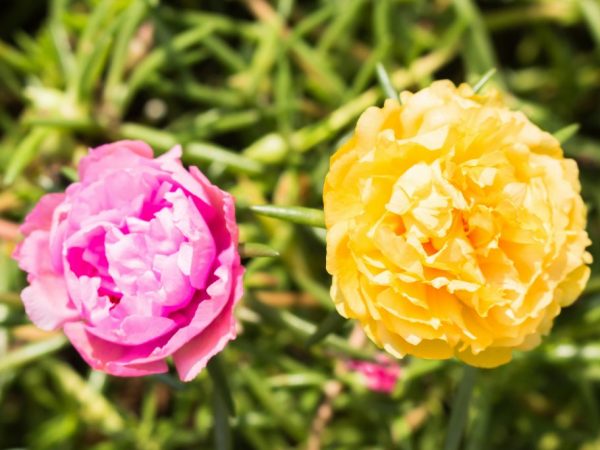

Watering provokes the growth of weeds
Watering ahead of schedule provokes the active development of extraneous vegetation. It is carried out 2-3 weeks before the expected planting of cultivated plants with simultaneous digging of ridges.
When weed shoots appear, the site is weeded and only then are the seeds of garden crops planted.
Chemical
You can get rid of purslane forever with the help of herbicides.
They are:
- continuous impact, or non-selective, - have a destructive effect on all plant crops, do not have a selective spectrum and destroy not only weeds, but also cultural plantings;
- selective action, or selective, - they destroy a certain species without harming other plants.
The preparations are not resistant to precipitation, therefore the treatments are carried out in dry weather. If it rains within 4-6 hours after spraying, the site is re-treated.
For the destruction of dicotyledon, universal remedies or compositions developed against dicotyledonous weeds are suitable (bred according to the instructions):
- Zenkor ultra. Selective herbicide. The impact is based on penetration into the cell layers of foliage and roots, interfering with photosynthesis and growth of the root system. Remains effective for up to 3 months. Non-toxic to insects and can be used near apiaries.
- Hurricane. Continuous spectrum herbicide preparation. The destructive effect is based on the penetration of the cells of the leaves and the obstruction of photosynthesis. Safe for the environment.
- Lapis lazuli. Selective complex for the destruction of dicotyledonous weeds in the pre-emergence and post-emergence phases of development. Remains effective for 2 months.
- Tornado. Selective preparation with high penetrating power. Effective against more than 150 subspecies of weeds. Non-toxic to insects.
- Prima. Selective spectrum chemical complex. It is able to penetrate into the cellular composition within 1-2 hours after spraying. Weed death occurs in 2-3 weeks.
In the absence of efficacy, drugs may be mixed if they are compatible.
To check the possibility of simultaneous use, mix ¼ tsp of each agent in 0.5 water, stir and leave for 0.5 h.
If during the specified time the mixture has not precipitated into a flocculent sediment, then the herbicides can be used together.
Chemicals are mixed in a certain sequence: first, dry powders are poured, liquid solutions and suspensions are added to them, in the last turn - emulsifiers, concentrates and finish with surfactants.
How to remove purslane with chemicals?
It is believed that fighting this weed with chemical agents is a very thankless job. However, many gardeners are convinced from their own experience that if you do the processing at the initial stage, in a period when the purslane has not yet taken root, then it is quite possible to get rid of it completely. Usually, drugs such as Roundup or Tornado are used for this purpose. It is very important to properly dilute the chemical.To do this, you need to follow the instructions exactly.
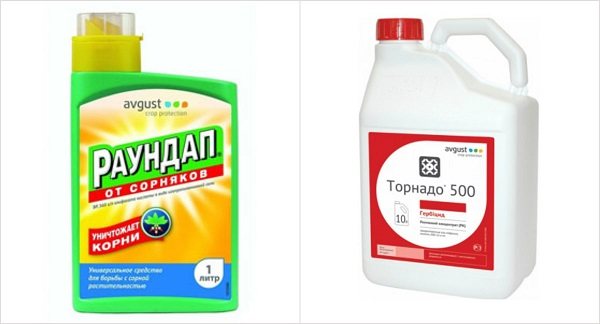

Some add a little nitrogen fertilizer to the resulting solution (about two tablespoons per bucket of water). The best time to apply herbicides is spring. When growing onions and carrots, you can use the herbicide Stomp, and those who grow potatoes can use Zencor.
Very often, plant breeders do the processing of the site in the fall, immediately after harvesting. The beds where purslane was previously found are usually cultivated by the Hurricane or its equivalent. In such cases, it is also important to adhere to the dosage indicated in the instructions.
Brief description of the plant
The plant purslane is a herbaceous plant and belongs to the Portulac family (Latin Portulacáceae). The weed is distinguished by a recumbent, fleshy, smooth stem, branched at the base. Its length can be from 10 to 30 cm. In most cases, it is reddish in color.
The spatulate fleshy leaves of plants are sessile, their shape is usually oblong-wedge-shaped or wedge-obovate, the apex is obtuse. Small flowers are also sessile, bisexual, yellow. The number of petals in flowers is 3-5. Their location is leaf axils or branching of stems. There they are in the form of bunches of 1-3 flowers.
The herb purslane garden blooms in hot weather, from June to September. The fruits ripen in early August. The fruit resembles a spherical or ovoid capsule, which is also called a lid.
On it you can see a transverse crack, which opens when ripe. The seeds of the plant are small, dark gray or black in color. The weed is widespread in Russia (in its European part), Kazakhstan, Ukraine, the Caucasus, and also in the Far East. It can often be found in vegetable gardens, in fields, along roads, on the banks of water bodies or on wastelands.
The most beautiful varieties of garden purslane
There are many varieties of purslane that are used to decorate a summer cottage. Choosing a plant for planting in a flower bed, as well as in hanging pots on a window or in a gazebo, the gardener gets an unpretentious beautiful flower. The flowering period occurs in mid-August or early September, so it easily replaces already wilted crops.
If you decide to decorate your flower beds with purslane, pay attention to the following varieties:
- Flamenco. Feels great on rocky and sandy soils, not afraid of drought. The only condition for a beautiful bloom is a sufficient amount of sun, therefore, it is better to plant Flamenco on the south side. Flowers have 6 shades at once: yellow, pink, purple, carmine, purple and white with red blotches.
- Tequila Cherry. Suitable for humid climates, feels great in any soil, does not require feeding and regular watering. Grows well in flower beds and flowerpots. Since Tequila Cherry grows very quickly, the variety is more often used to quickly create a flower carpet on curbs, slides and lawns. The plant reaches a diameter of 40 cm, a height of 5 cm, and produces large cherry-colored flowers.
- Amber Coast. It is used to create flower carpets, as one plant grows to a diameter of 35–40 cm. The flowers have a golden honey color and a velvety texture.
- Sun glare. The variety is distinguished by large flowers that look like roses. The bushes reach 30–40 cm, so they fill lawns, hills and large flower beds.
Harm and contraindications
List of contraindications to the use of garden purslane:
- hypertension - remember about norepinephrine, which increases blood pressure;
- pregnancy - the plant stimulates the tone of the uterus and can lead to miscarriage;
- breastfeeding - the risk of side effects in the infant is high;
- increased nervous irritability;
- allergy;
- tendency to seizures.
Purslane can be harmful to health, as it contains saponins. These substances irritate the mucous membranes of the internal organs.
- With moderate use of purslane, saponins have a positive effect: they increase the secretion of internal glands, dilute phlegm in the bronchi.
- If you lean heavily on the grass, you can get irritation of the mucous membranes of the stomach and intestines, face nausea, vomiting, diarrhea.
Vegetable purslane contains a lot of oxalic acid. This substance stimulates intestinal motility and helps the body absorb calcium. However, when heat treated, oxalic acid forms an inorganic compound that leads to the destruction of bones, and also accumulates in the kidneys and bladder in the form of stones. Therefore, the plant is best eaten raw.
Valuable green vegetable crops - varieties Makovei, Paradox, Firefly, Kuzminsky
Purslane can be used as an edible plant. In addition to its unusual taste, it has many beneficial properties due to its rich composition. For cooking, you can use varieties:
- Macovei. Contains a large amount of vitamin C and Omega-3 acids, as well as iron, zinc, copper, potassium, calcium, sodium and many other substances. Makovei has a spicy sweetish taste, so it is added to fresh salads and sauces. The plant grows well in warm climates. Only the top leaves are used for cooking.
- Paradox. This variety also contains a large amount of vitamin C, therefore it has a sour and slightly pungent flavor. It is customary to marinate the herb and serve as a side dish for fish or meat with vegetables. For cultivation, you need to choose sunny areas and not be zealous with watering.
- Glowworm. Differs in a spicy sweet-salty taste, therefore it is used both fresh and pickled. Firefly is included in salads and sauces, as well as soups. The variety has a high yield.
- Kuzminsky. This is an early maturing crop that ripens within 15 days after planting. Several crops can be harvested from one bush during the season. The plant has a neutral taste with a slight bitterness. In the kitchen, it is used both fresh and pickled. The variety is unpretentious, but does not tolerate cold weather.


